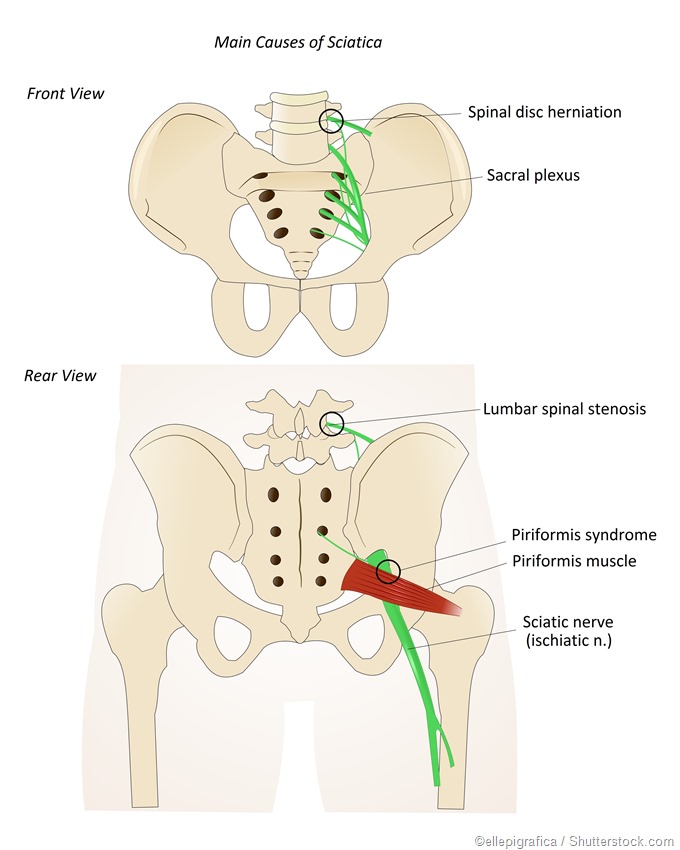Launching 1st March 2023. Also check out: https://www.thailandmedical.news/
Sciatica is a condition in which there is a disorder of the lower back which causes compression of the nerve leading down into and supplying the lower limb. It manifests as numbness, tingling, pain, or even muscular weakness in the leg, usually radiating downwards. It is a symptom rather than a disease in itself.
The symptoms characteristic of sciatica are due to an underlying condition which exerts pressure on or causes injury to the sciatic nerve. This important nerve originates from nerve roots in the lower part of the spinal cord, which leave the spinal canal through spaces between adjacent vertebra and join together.

The lower back is naturally curved and bends a lot during normal daily activities. It is made up of five large lumbar vertebral bones which are responsible for movement in this region. With age, the intervertebral discs that cushion the movement of the bones on each other during spinal flexion or extension tend to become thinned out and hard. This adds stress to the load on the back, and low back pain or other symptoms such as pins and needles may result.
Starting from the lumbar spine, the sciatic nerve travels down into the gluteal region, and thence to the back of the thigh and the leg. It transmits sensation from a large area of the lower limb. It also innervates the muscles at the back of the knee and the lower leg.
The cause of the nerve compression may range from intervertebral disc abnormality to a pelvic tumor, and include:
Persistent pins and needles may thus be indicative of a serious medical condition, which may result (in rare cases) in irreversible neurological deficits of the bladder or lower limbs.
However, sciatica can also be due to temporary conditions, such as sitting with the thigh pressing against the edge of a hard seat. The pressure on the nerve can make it go to sleep. When you change position or get up, the nerve starts to recover, which is felt in the form of a brief period of numbness followed by pins and needles.
The condition is diagnosed on the basis of the symptoms followed by a physical examination, including the straight-leg-raise test. Imaging of the spine may be ordered in many cases, especially when physicians want to rule out any underlying disease (such as infections or malignancies).
In most people, sciatica resolves with symptomatic management in three months, at most. Complete rest is not advised, but some limitation of painful activity may be beneficial. Over-the-counter analgesics and anti-inflammatory drugs are often helpful, as are ice packs.
Exercises to improve the posture at rest and during daily tasks are important in building up spinal flexibility and core muscle strength. This can help avoid the repeated onset of sciatica. A small proportion of patients is referred to secondary care, sometimes necessitating surgery.